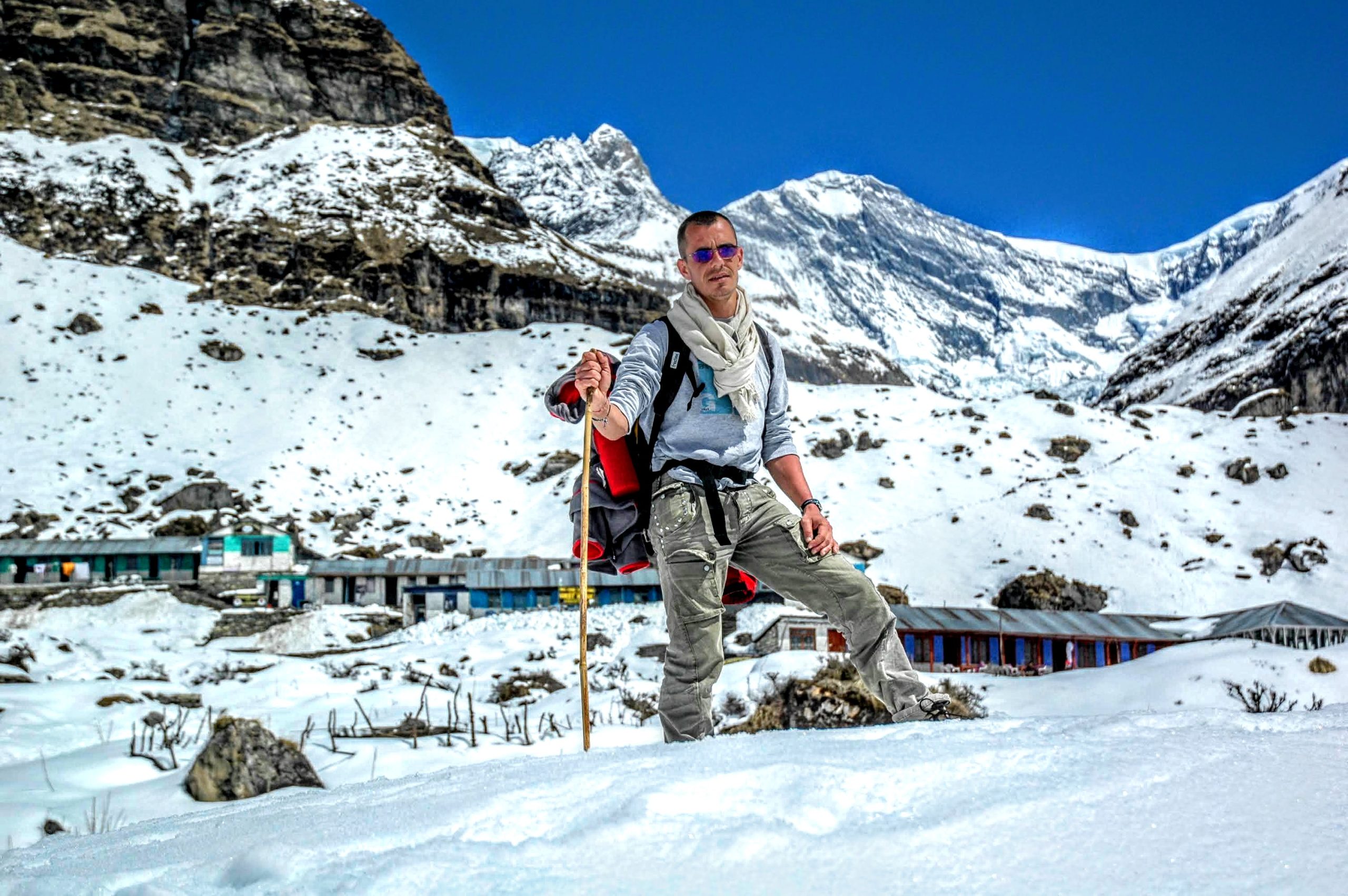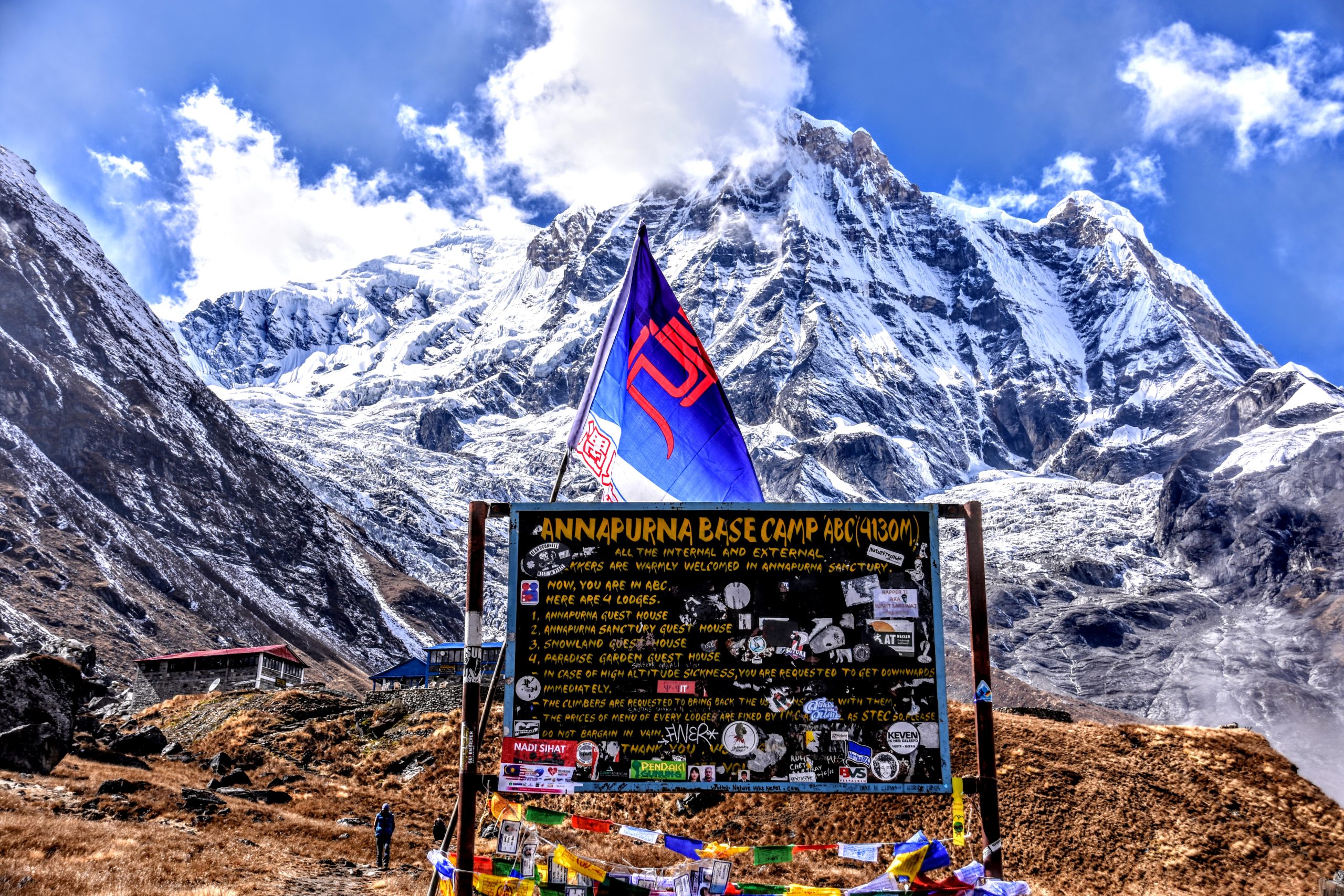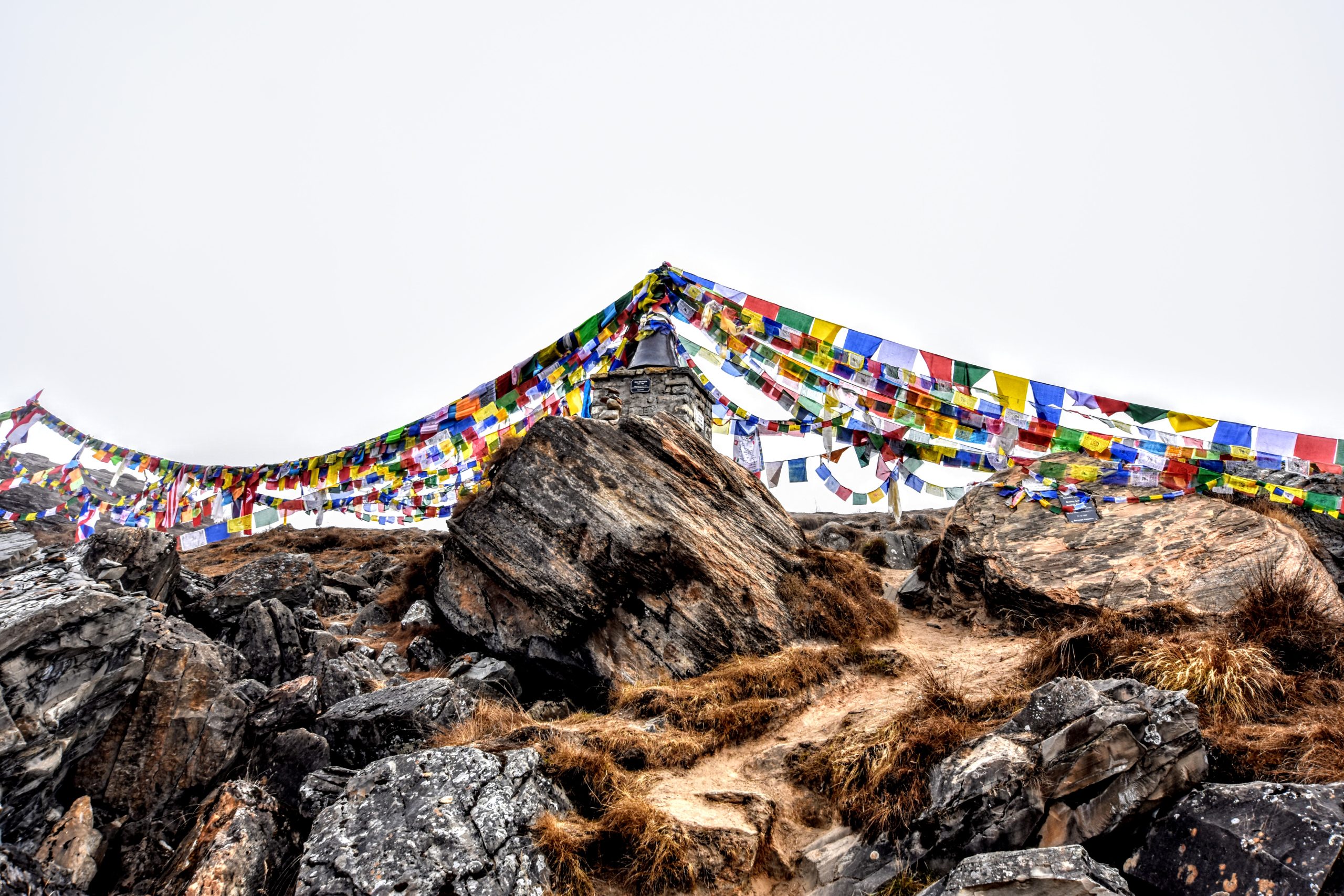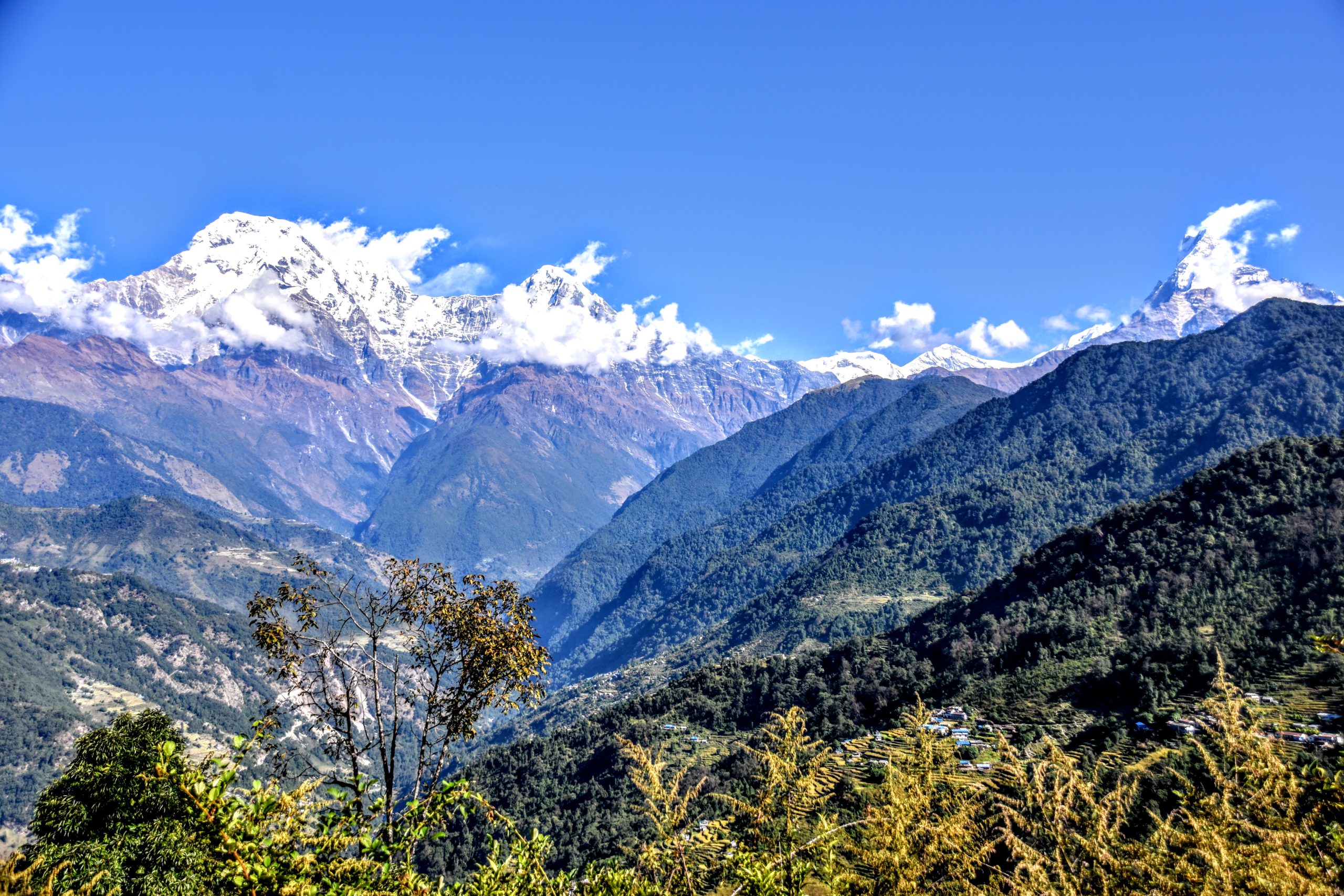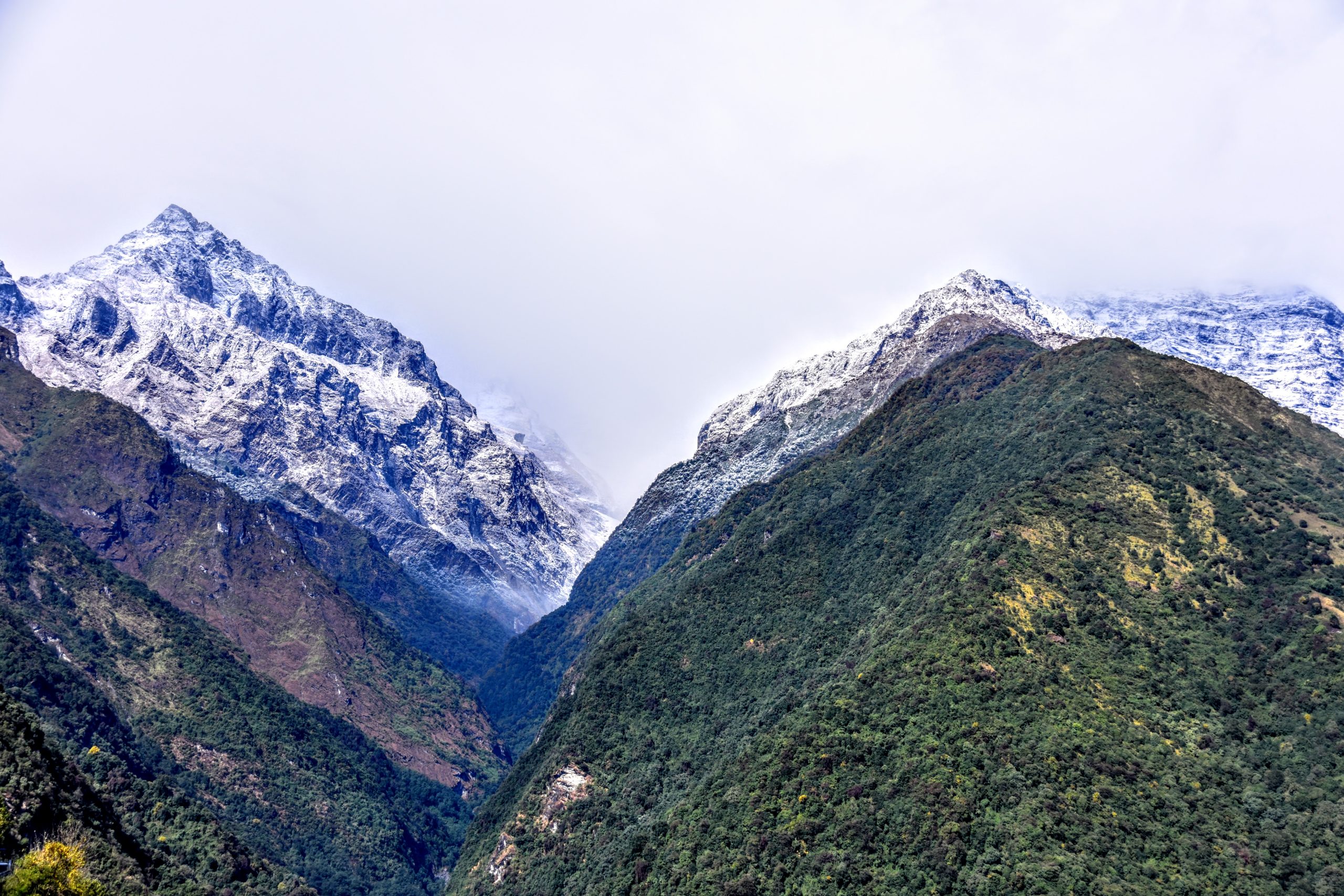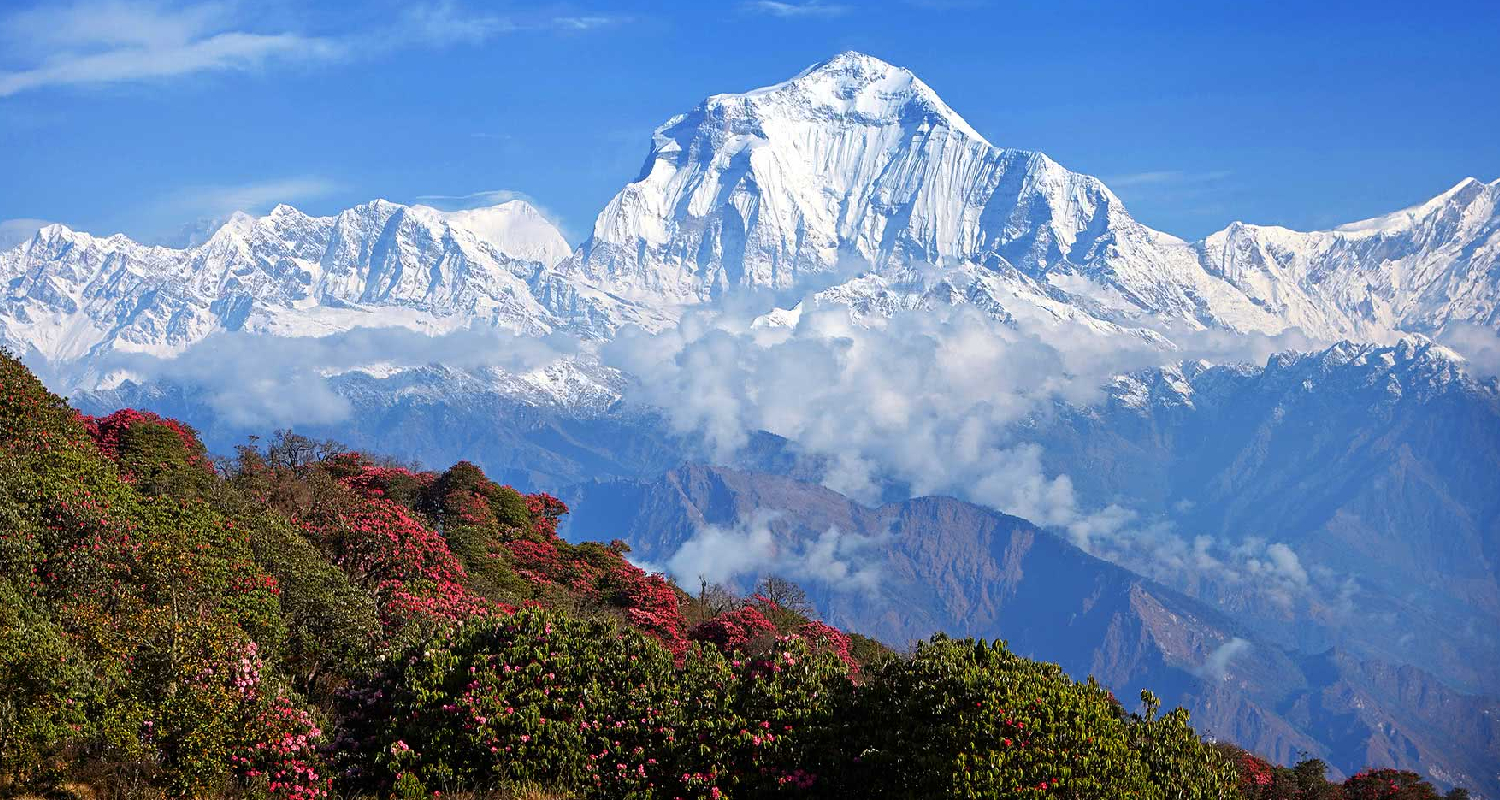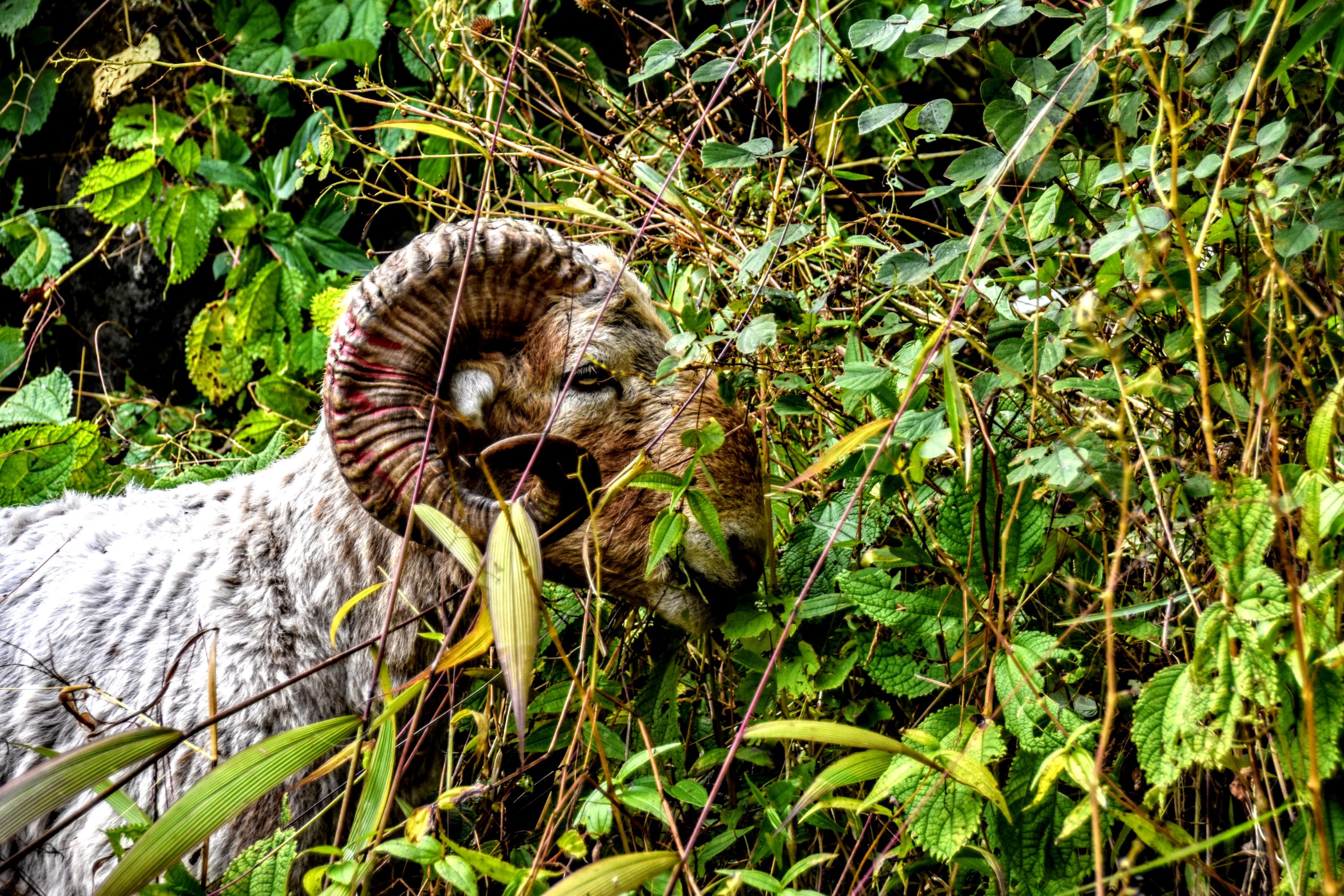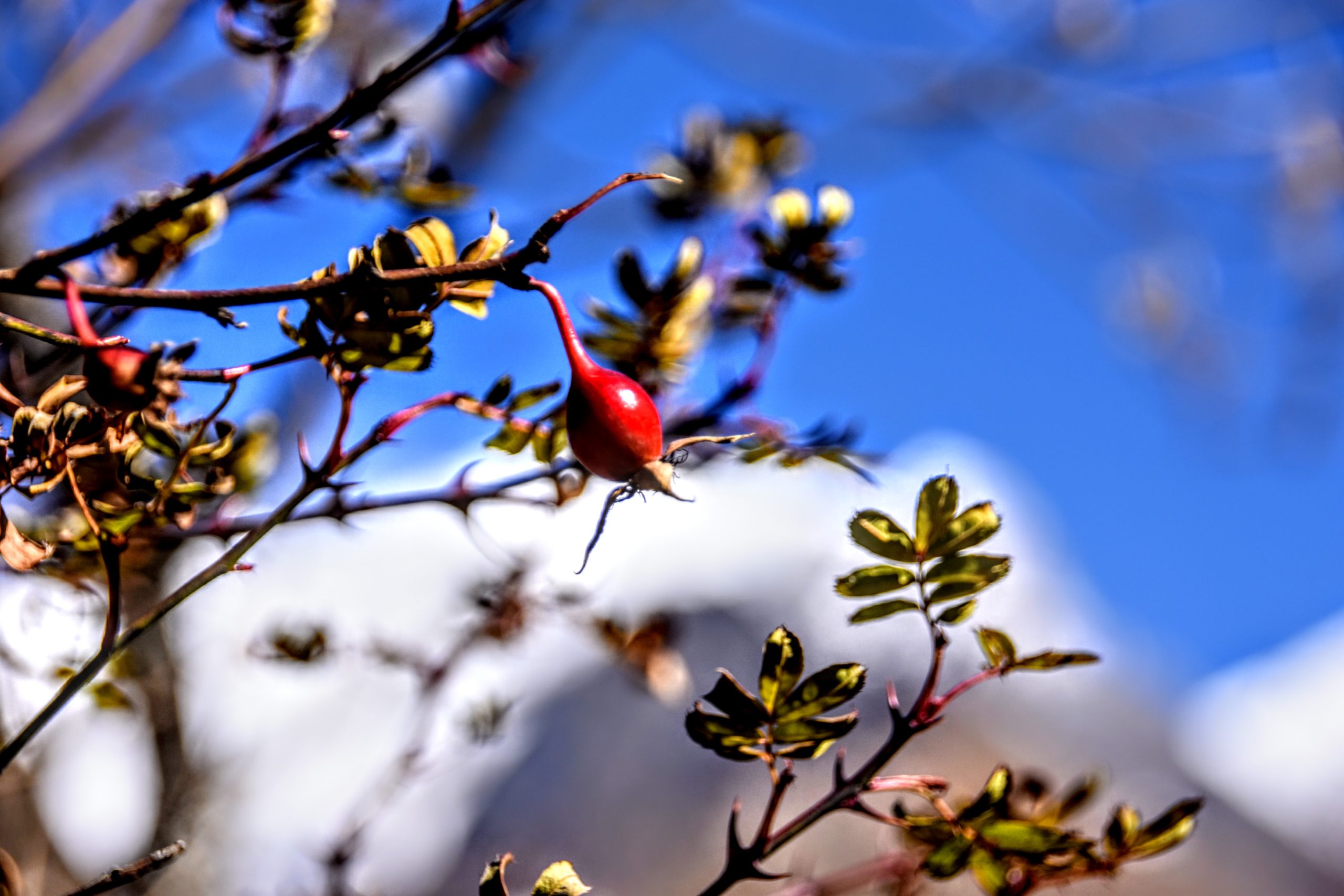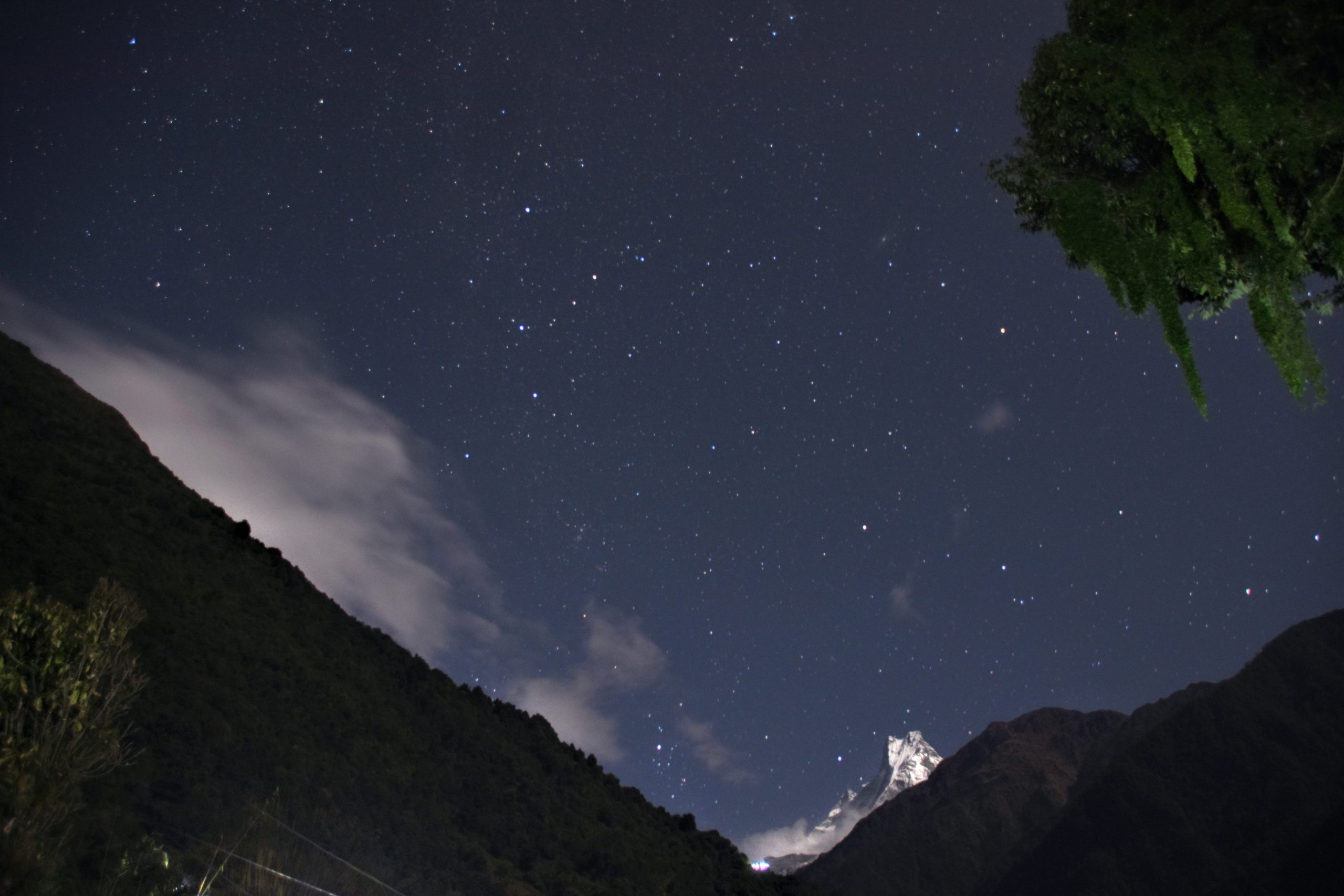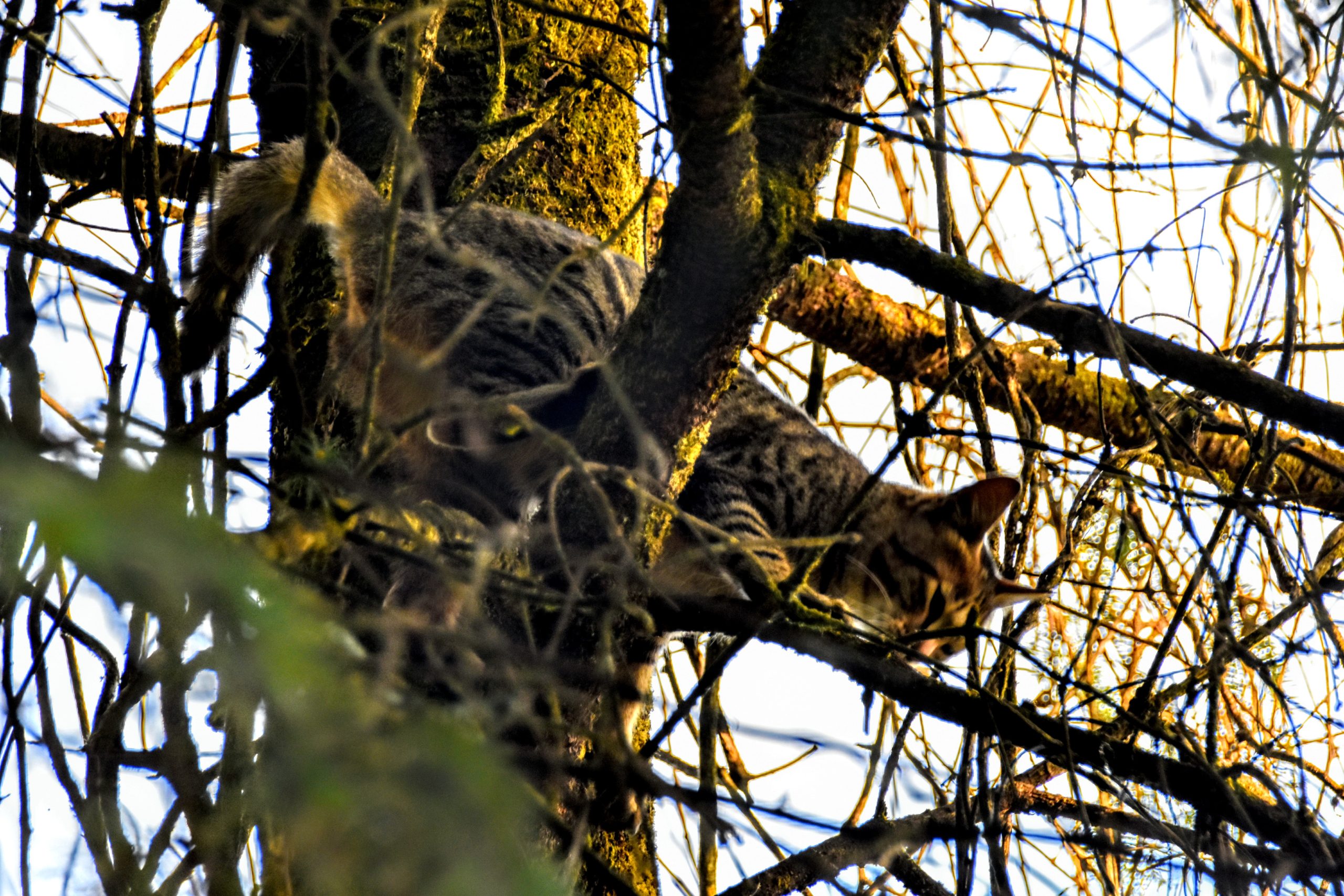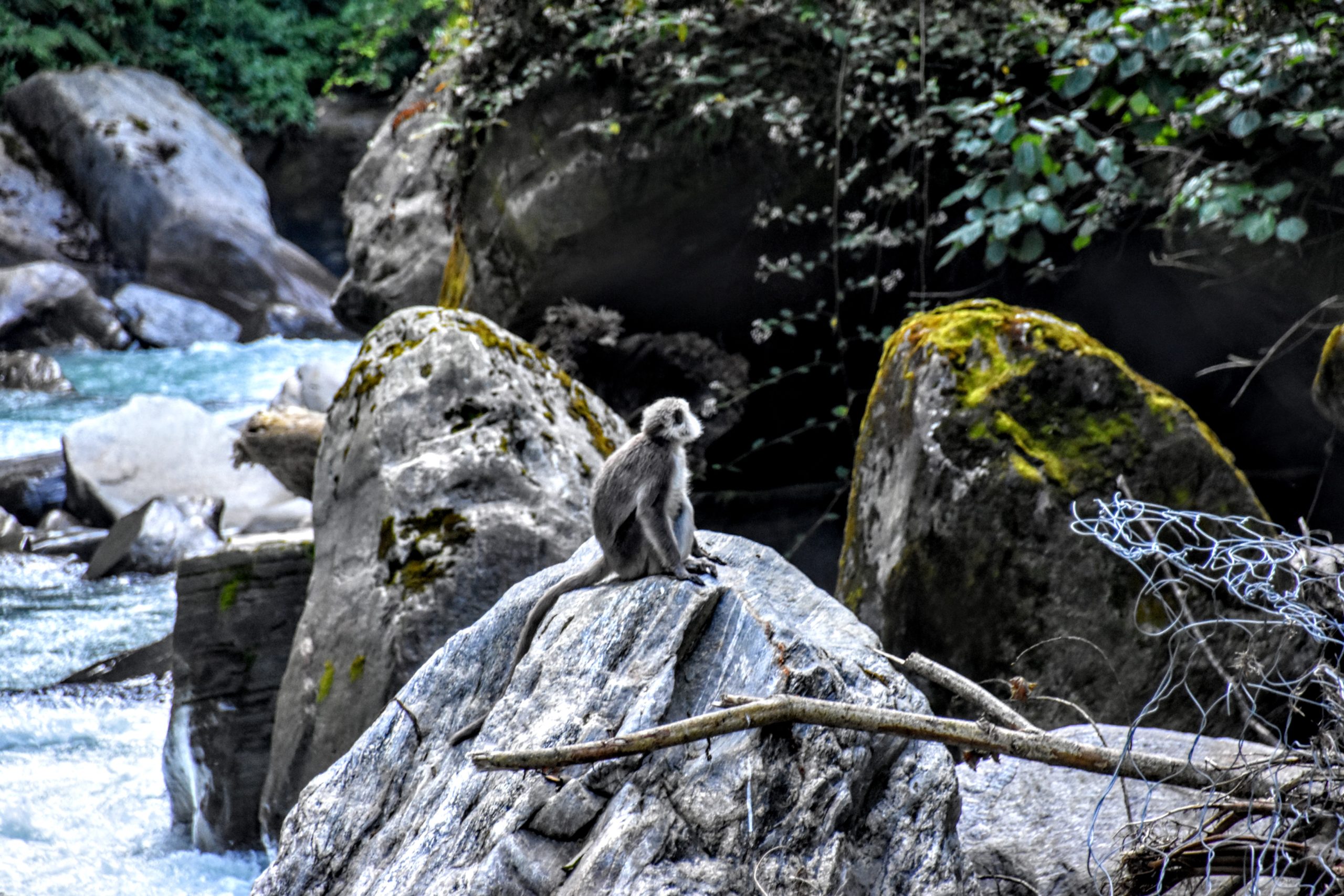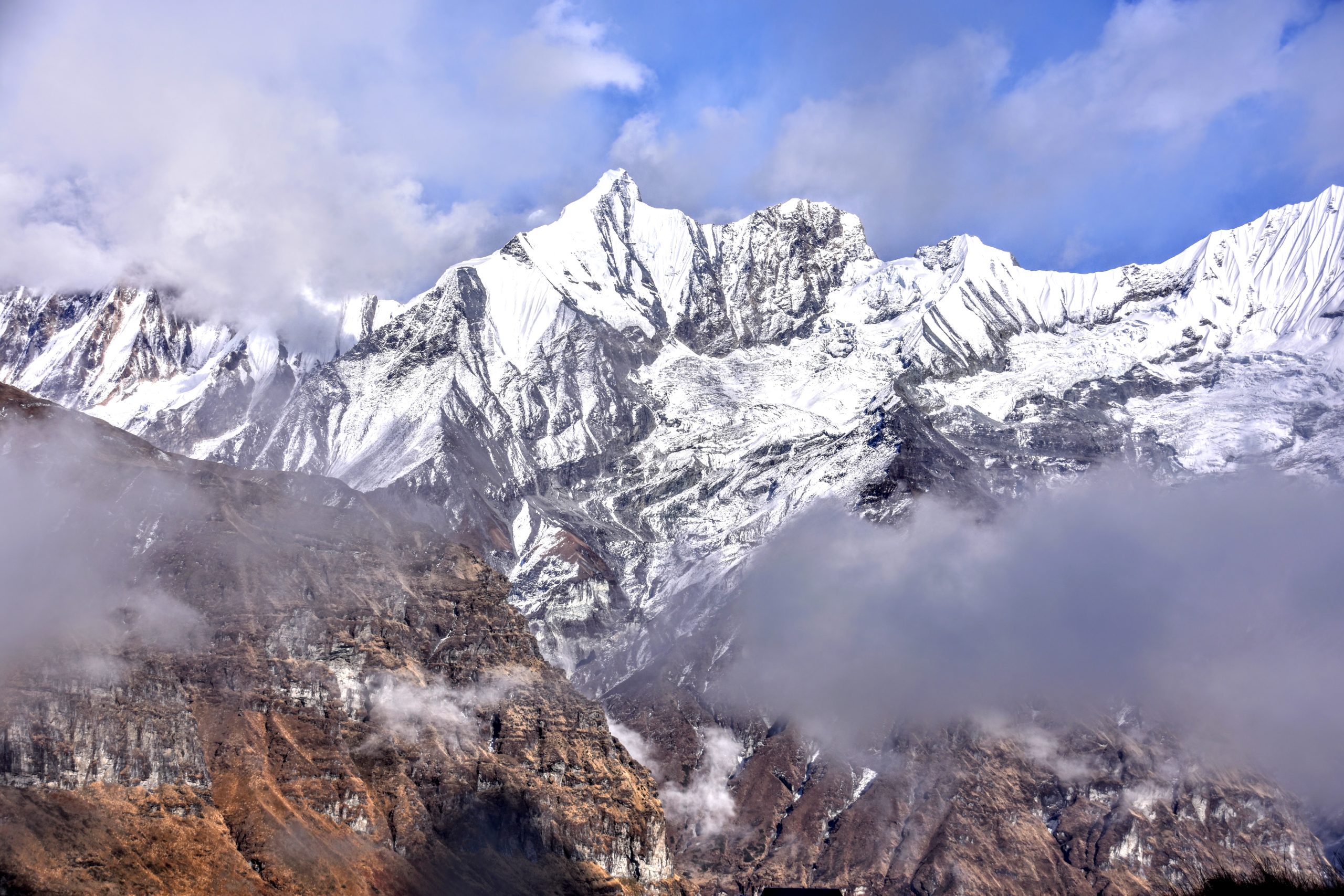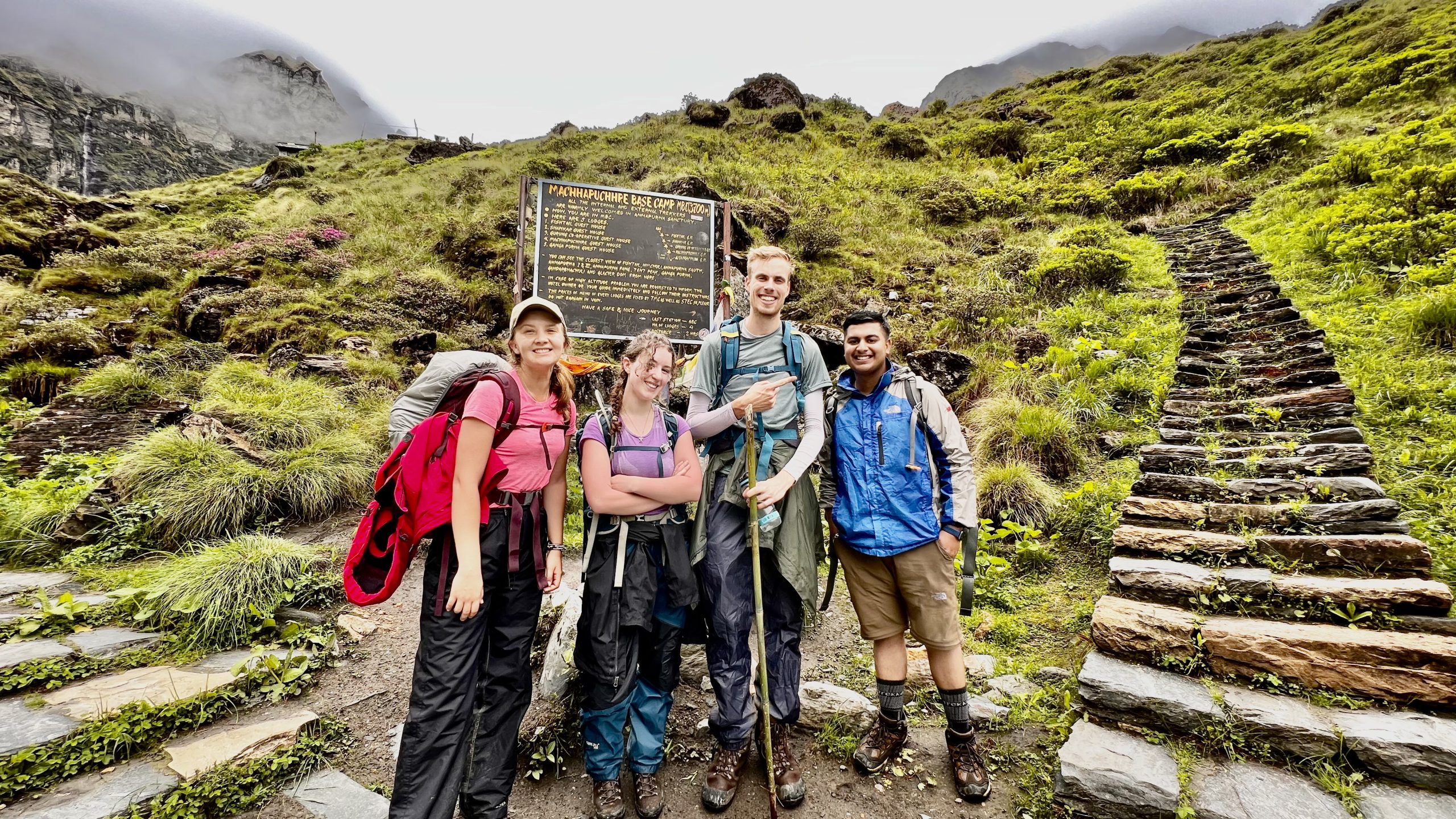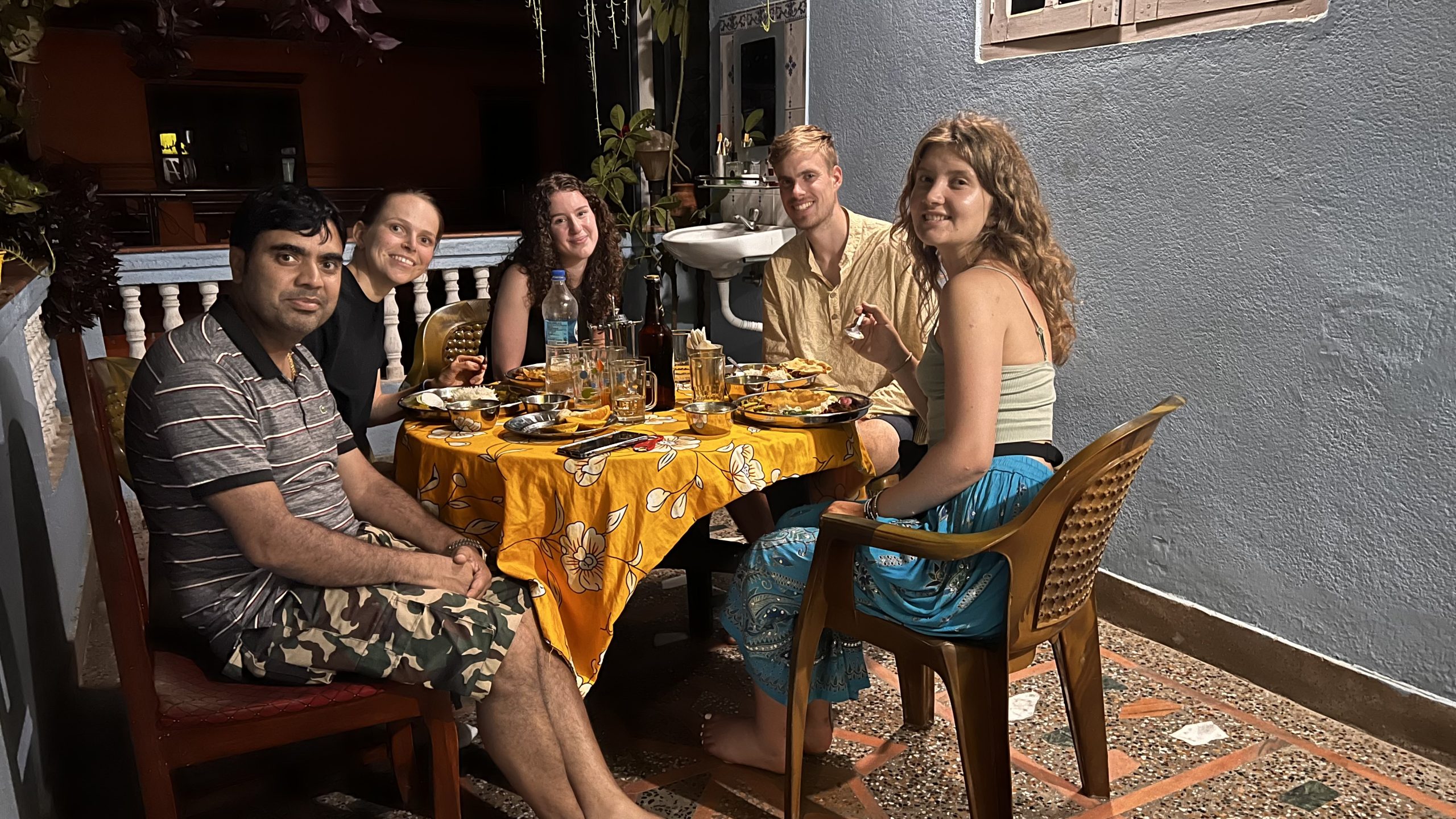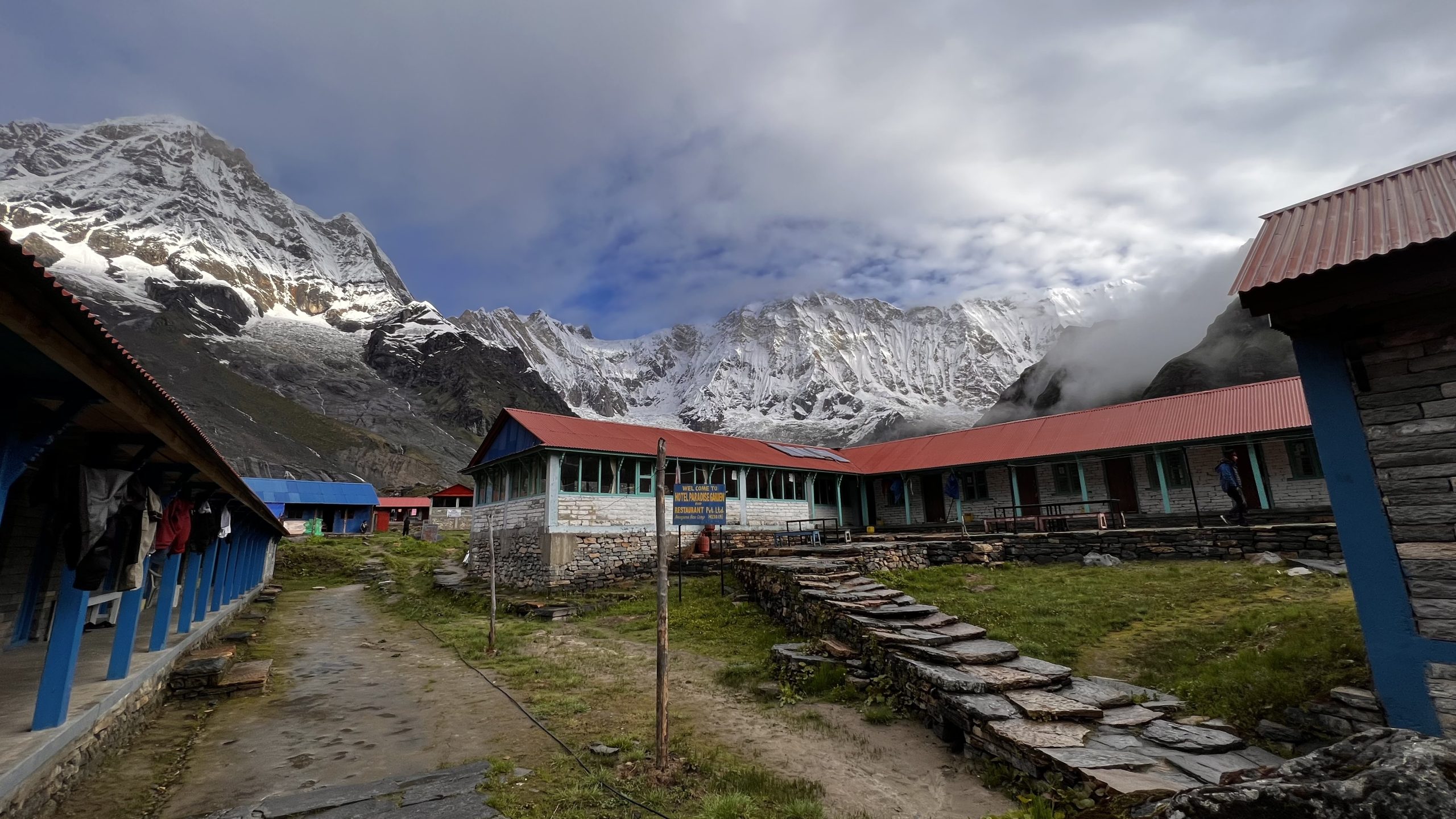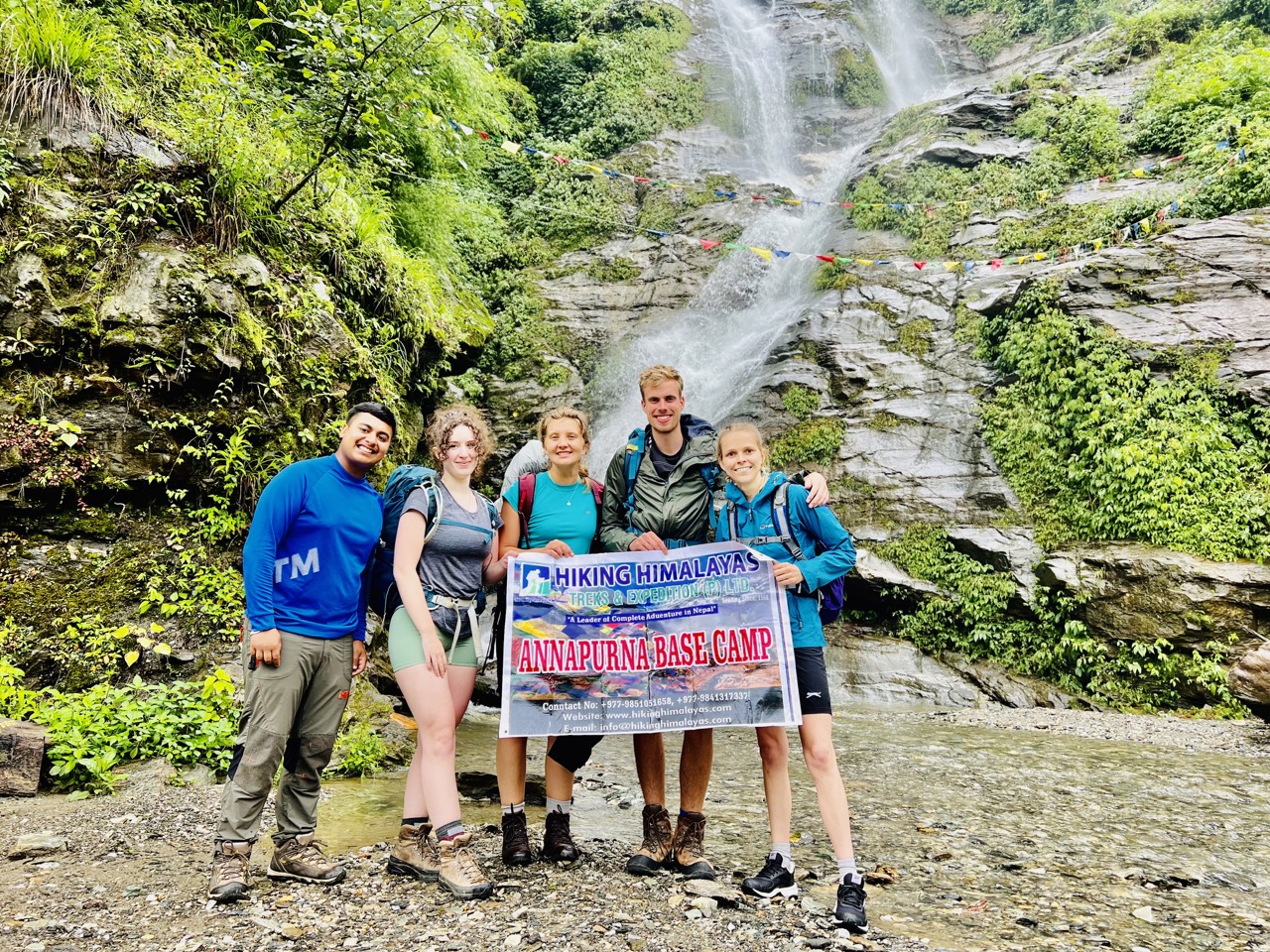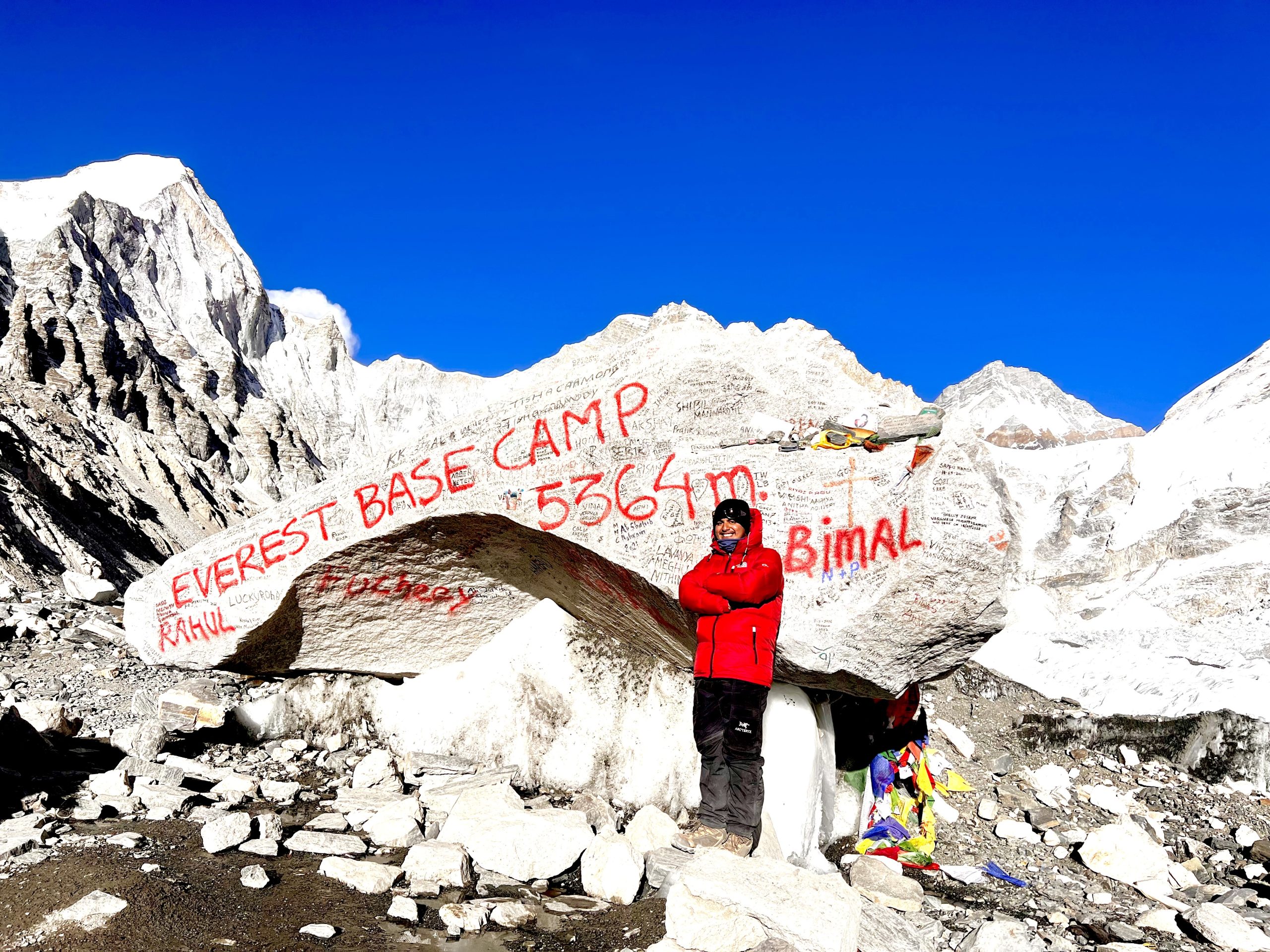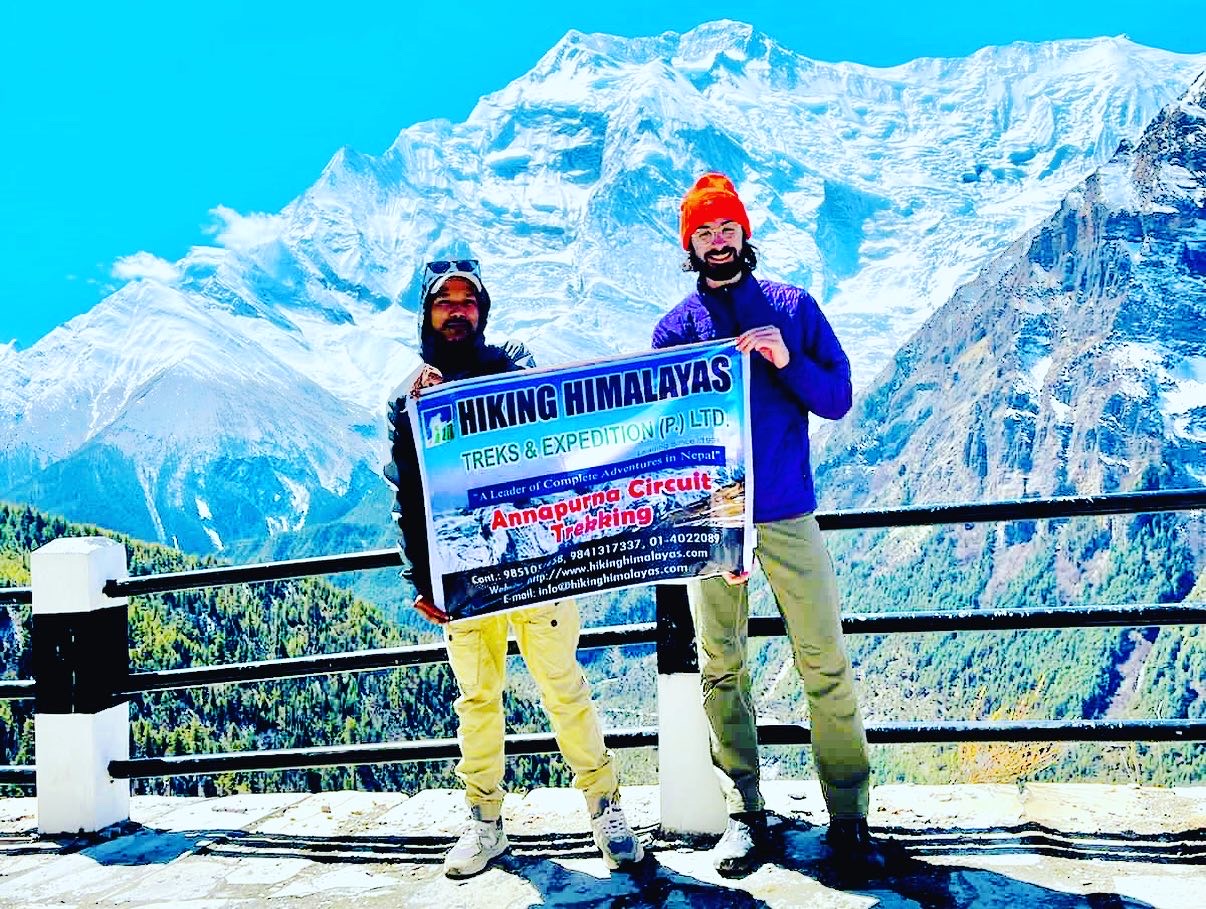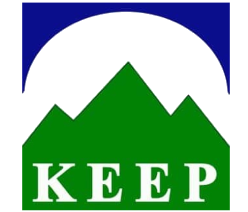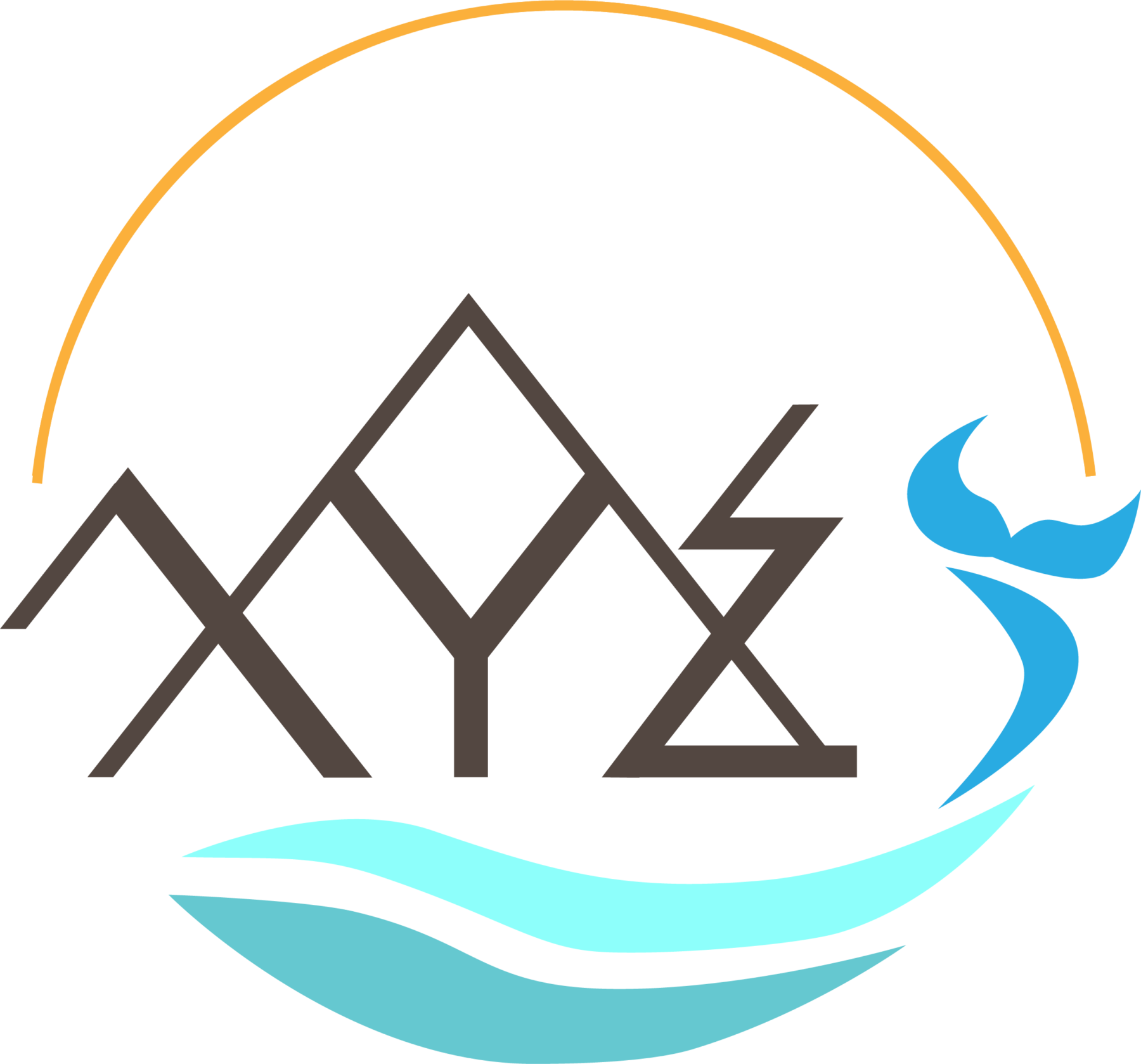Good to Know
- LOCATION
- Annapurna Region
- DURATION
- 14 Days
- Difficulty Level
- Moderate
- ARRIVAL ON
- Kathmandu, Nepal
- DEPARTURE FROM
- Kathmandu, Nepal
- TRIP TYPE
- treking
- MAX ALTITUDE
- 4130 meters
- GROUP SIZE
- 1-10
- MEAL
- Breakfast - Lunch - Dinner
- ACCOMMODATION
- Lodges/ Tea House
- TRANSPORTATION
- By Tourist bus
- TRIP CODE
- HHTE ABC
Annapurna Base Camp Trek
Trekking Overview and Trip Information: Annapurna Base Camp (ABC) Trek
The Annapurna Base Camp (ABC) trek is an extraordinary adventure that takes you into the heart of the breathtaking Annapurna Massif, one of Nepal’s most iconic mountain ranges. Nestled amidst towering peaks and lush forests, this trek offers an unforgettable journey into the Himalayas. Here, we provide essential information for foreign travelers planning to embark on this remarkable expedition.
Geographical Knowledge of the Land You Will Trek
The Annapurna Base Camp (ABC) trek takes you through a region of incredible geographical diversity within the Annapurna Conservation Area in Nepal. Here is some geographical knowledge about the land you will tread during the Annapurna Base Camp trek:
- Himalayan Range: The Annapurna Massif, which includes Annapurna I (8,091 meters), dominates the region. You’ll trek in the southern foothills of these mighty Himalayan peaks.
- Altitude Variation: The trek covers a wide range of altitudes, starting from approximately 900 meters (2,950 feet) in Nayapul and reaching Annapurna Base Camp at around 4,130 meters (13,550 feet). This variation allows you to experience different climates and ecosystems.
- Terraced Fields: At lower elevations, you’ll encounter terraced fields, where local communities grow crops like rice, maize, and millet, showcasing the ingenuity of the Nepali people in cultivating steep mountain slopes.
- Rhododendron Forests: As you ascend, you’ll trek through lush rhododendron forests, vibrant with colorful blooms during the spring months, providing a beautiful contrast to the snowy peaks.
- Marsyangdi and Modi Khola Rivers: The trek follows the Marsyangdi River and later the Modi Khola River, crossing suspension bridges that span their rushing waters, carving deep valleys.
- Annapurna Sanctuary: The trek culminates in the Annapurna Sanctuary, a glacial basin surrounded by some of the world’s highest peaks, offering trekkers a sense of being enclosed by mountains.
- Avalanche-Prone Areas: Near the base camp, you’ll encounter avalanche-prone areas, especially during the spring season when melting snow can create unstable conditions. Trekking guides ensure safety.
- Natural Hot Springs: The Jhinu Danda area along the trek has natural hot springs, a soothing respite for trekkers and a testament to the geological activity in the region.
- Glacial Moraines: As you approach Annapurna Base Camp, you’ll traverse glacial moraines—masses of rocks, debris, and ice left behind by retreating glaciers, evidence of the dynamic nature of the Himalayan landscape.
- Cultural Diversity: Geographical diversity is complemented by cultural diversity as you pass through villages inhabited by Gurung and Magar communities, offering insight into the traditional lifestyles and customs of the region’s people.
The Annapurna Base Camp trek is a remarkable journey through a geographical wonderland, showcasing the striking contrasts and natural beauty of the Nepali Himalayas. Trekkers are treated to an ever-changing landscape, from fertile lowlands to snow-capped peaks, all within the confines of the Annapurna Conservation Area. Experience this unforgettable adventure and immerse yourself in the wonders of the Annapurna Massif.
Trail Overview and Cultural Experience Along the (ABC) Trek:
The Annapurna Base Camp (ABC) trek is not only renowned for its stunning natural beauty but also for the diverse cultural experiences it offers as you traverse the foothills of the Annapurna Massif in Nepal. Here’s an overview of the trail and the rich cultural tapestry you can immerse yourself in:
- 1. Starting Point:
– The trek typically begins in Nayapul, located in the subtropical lowlands of Nepal, near the city of Pokhara. - 2. Village Life:
– As you ascend through picturesque villages, you’ll have the opportunity to interact with local communities, including Gurungs, Magars, and Thakalis.
– These communities are known for their warm hospitality, and you can experience their traditional way of life by staying in tea houses along the route. - 3. Charming Villages:
– Villages like Ghandruk and Chhomrong are cultural hubs along the trail, where you can witness local customs, visit monasteries, and engage in cultural exchanges with the residents. - 4. Traditional Architecture:
– The architecture of the villages is a blend of practicality and cultural significance, with intricately designed homes and teahouses.
– You can explore these charming villages and their unique architectural styles. - 5. Rhododendron Forests:
– Trek through lush rhododendron forests, where prayer flags flutter in the breeze and colorful Mani walls (stone walls inscribed with Buddhist prayers) add to the spiritual ambiance. - 6. Local Cuisine:
– Savor local Nepali cuisine, including dal bhat (rice and lentils), momos (dumplings), and dhido (traditional millet-based dish), in the tea houses along the way.
– Food is not only sustenance but a cultural experience as well. - 7. Cultural Festivals:
– If your trek coincides with local festivals or celebrations, you may have the opportunity to participate in the festivities and observe traditional dances, music, and rituals. - 8. Annapurna Sanctuary:
– The climax of the trek is reaching Annapurna Base Camp itself, surrounded by towering peaks. This awe-inspiring location is not only a geological wonder but also a spiritual one, with prayer flags and cairns placed by trekkers and climbers. - 9. Teahouse Conversations:
– Engage in conversations with fellow trekkers and locals at the teahouses. It’s a chance to share stories, learn about the region, and forge connections. - 10. Return Journey:
– On the way back, revisit villages you passed through on your ascent, providing a unique perspective as you experience the same locales from a different angle. - The ABC trek is a remarkable blend of natural beauty and cultural richness. It offers a profound opportunity to connect with the diverse cultures and traditions of Nepal while trekking through some of the world’s most spectacular landscapes. This unique combination of cultural immersion and scenic wonder makes the ABC trek an unforgettable experience.
- Trip Duration:
The standard duration for the Annapurna Base Camp trek is approximately 10-14 days, depending on the specific itinerary and starting point. This includes the trek itself and time for travel to and from Kathmandu, Nepal’s capital. - Best Time to Trek:
The ideal trekking seasons are spring (March to May) and autumn (September to November) when the weather is stable, skies are clear, and temperatures are moderate. - Permits:
Trekkers will need permits to enter the Annapurna Conservation Area. These permits are typically obtained through your trekking agency and cover park fees and conservation charges. - Guided vs. Independent Trek:
Both guided and independent treks are possible. Guided treks offer the benefit of experienced guides who provide local insights, assist with logistics, and ensure safety. Independent trekkers should be well-prepared and familiar with the trail. - Physical Fitness:
While the ABC trek is considered moderate in difficulty, a reasonable level of physical fitness is essential. Prior hiking experience and cardiovascular fitness will enhance your experience. - Packing List:
Pack essentials such as appropriate clothing, a reliable daypack, trekking boots, and a sleeping bag. Consult with your trekking agency for a detailed packing list tailored to the season. - Accommodation:
Tea houses and lodges along the trail provide accommodation and meals. Rooms vary from basic to more comfortable, and most have shared bathrooms. - Altitude Considerations:
Altitude sickness is a potential concern. Trekking itineraries typically include acclimatization days to help your body adjust gradually. Listen to your guide’s advice and monitor your health closely. - Safety:
Travel insurance covering high-altitude trekking and emergency evacuation is crucial. Follow your guide’s instructions, stay informed about weather conditions, and be prepared for changing circumstances.
Facilities and accommodation along the Annapurna Base Camp (ABC) trek
Facilities and accommodation along the Annapurna Base Camp (ABC) trek are essential for trekkers to enjoy a comfortable journey through the stunning Himalayan landscapes. Here’s an overview of what you can expect in terms of facilities and lodging options:
1. Tea Houses and Lodges:
– The primary form of accommodation on the ABC trek is tea houses and lodges, which are family-run guesthouses catering to trekkers.
– These lodges offer basic but cozy rooms with twin beds and shared bathroom facilities.
– Accommodations range from rustic to more comfortable, and the quality may vary from one lodge to another.
2. Dining:
– Tea houses and lodges provide dining facilities where trekkers can enjoy three meals a day.
– Meals typically include a variety of options, such as Nepali, Tibetan, and international dishes like pasta, pizza, and rice and curry.
– Be prepared for limited food choices at higher altitudes, where the menu may become more basic.
3. Hot Showers:
– Hot showers are available in some tea houses, but they often come with an additional fee.
– At higher altitudes, the availability of hot water may be limited due to the challenges of heating water at altitude.
4. Electricity and Charging:
– Many tea houses offer charging facilities for electronic devices, such as smartphones and cameras, for a fee.
– Power supply can be unreliable, especially at higher elevations, so it’s advisable to bring backup power sources like portable chargers.
5. Wi-Fi and Internet:
– Wi-Fi is available in some tea houses, primarily in lower-altitude villages like Chhomrong and Jhinu Danda.
– Keep in mind that internet access can be slow and intermittent, and you may need to pay for usage.
6. Toilets:
– Toilet facilities in tea houses and lodges vary, ranging from basic squat toilets to sit-down toilets with flushes.
– As you ascend higher into the mountains, expect more basic facilities, including outdoor toilets.
7. Clean Drinking Water:
– Safe drinking water is essential during the trek. Trekkers are encouraged to use water purification tablets or filters to treat tap water or water from natural sources.
– Many lodges also offer boiled water for a fee.
8. Supplies and Gear:
– Trekking gear, snacks, and other supplies can be purchased in villages along the route, but prices may increase at higher altitudes.
– It’s advisable to stock up on essentials in lower-altitude towns like Pokhara or Nayapul before starting the trek.
9. Medical Facilities:
– Basic medical facilities and pharmacies are available in some villages, but their supplies may be limited.
– It’s wise to carry a basic first-aid kit and any necessary medications with you.
While the facilities and accommodations on the ABC trek are basic, they provide the essentials needed for trekkers to enjoy the journey and experience the natural beauty and cultural richness of the Annapurna region.
Can Beginners Trek to Annapurna Base Camp
Yes, beginners can absolutely trek to Annapurna Base Camp (ABC) and experience the stunning beauty of the Himalayas. While the trek presents challenges, it is considered one of the more accessible high-altitude treks in Nepal, making it feasible for those new to trekking. To prepare, beginners should focus on improving their physical fitness through cardiovascular exercises and strength training. Choosing the right trekking agency or guide can provide valuable support, ensuring a safe and enjoyable journey. The trek itinerary typically includes acclimatization days to help adjust to higher altitudes gradually. With the right mindset, preparation, and support, beginners can embark on this remarkable adventure, reveling in the breathtaking landscapes and cultural encounters that the Annapurna region has to offer.
Alternative Treks You Can Consider in Annapurna Base Camp
While the Annapurna Base Camp (ABC) trek is a popular and rewarding option, there are several alternative treks in the Annapurna region that offer equally captivating experiences. Here are a few alternatives to consider:
1. Annapurna Circuit Trek:
– This classic trek circles the Annapurna Massif, taking you through a wide range of landscapes, from subtropical forests to arid Tibetan plateaus.
– The Annapurna Circuit offers cultural diversity, with visits to traditional villages like Manang and Marpha, as well as the challenging Thorong La Pass (5,416 meters).
2. Mardi Himal Trek:
– The Mardi Himal Trek is a shorter trek that takes you to the base camp of Mardi Himal (5,587 meters). This trek provides stunning views of the Annapurna and Machapuchare (Fishtail Mountain) ranges.
– It’s a less crowded option, making it ideal for trekkers seeking solitude.
3. Ghorepani Poon Hill Trek:
– The Ghorepani Poon Hill Trek is a shorter and less strenuous trek, perfect for beginners and those with limited time.
– It leads to Poon Hill (3,210 meters), which offers breathtaking sunrise views of the Annapurna and Dhaulagiri ranges.
4. Khopra Danda Trek:
– The Khopra Danda Trek is another less-crowded alternative in the Annapurna region. It takes you to Khopra Ridge (3,660 meters), offering panoramic mountain views.
– This trek provides opportunities to explore remote villages and enjoy a tranquil trekking experience.
5. Nar Phu Valley Trek:
– The Nar Phu Valley Trek is an off-the-beaten-path adventure that explores the secluded Nar and Phu valleys, with their unique Tibetan-influenced culture.
– Trekkers can expect fewer crowds and a glimpse into a traditional way of life.
6. Upper Mustang Trek:
– The Upper Mustang Trek is a restricted area trek that delves into the ancient kingdom of Mustang, known for its unique culture and barren landscapes resembling the Tibetan Plateau.
– It offers a rare opportunity to explore a remote and culturally rich region.
7. Jomsom and Kagbeni Trek:
– This shorter trek explores the Kali Gandaki Valley and leads to the picturesque towns of Jomsom and Kagbeni.
– Trekkers can experience the diverse landscapes of the Mustang region and the influence of Tibetan culture.
Each of these alternative treks in the Annapurna region has its own unique charm, whether it’s cultural immersion, stunning scenery, or a less-traveled path you’re seeking. Depending on your preferences and the time you have available, you can choose the trek that best suits your interests and trekking experience.
Conclusion:
The Annapurna Base Camp trek is an extraordinary journey through Nepal’s natural beauty and cultural richness. Proper planning, physical preparation, and the guidance of experienced professionals ensure a safe and memorable adventure. Immerse yourself in the majestic Annapurna Massif and experience the warmth of the local communities on this exceptional trekking expedition.
Highlights
1. Spectacular Mountain Views: The ABC trek offers awe-inspiring vistas of the Annapurna Massif, including the majestic Annapurna I (8,091 meters), Hiunchuli, Machapuchare (Fishtail Mountain), and other towering peaks. Watching the sunrise over these peaks from the base camp is a magical experience.
2. Diverse Landscapes: Trek through a variety of landscapes, from lush terraced fields and subtropical forests to alpine meadows and glacial moraines. The ever-changing scenery keeps the trek exciting and visually captivating.
3. Cultural Encounters: Interact with the warm and hospitable communities of Gurung and Magar villages along the trail. Experience their rich culture, traditions, and way of life. You can also visit ancient monasteries and learn about Buddhism in the region.
4. Local Cuisine: Savor delicious Nepali and Tibetan dishes in the tea houses and lodges along the route. Try dal bhat (rice and lentils), momos (dumplings), and Sherpa stew for a taste of the local cuisine.
5. Natural Hot Springs: Enjoy a relaxing soak in the natural hot springs at Jhinu Danda. These therapeutic springs are a well-deserved treat for trekkers and provide a soothing experience.
6. Annapurna Sanctuary: The trek culminates at the Annapurna Sanctuary, a glacial basin surrounded by towering peaks. This unique geographical feature offers a sense of being enclosed by mountains and is a highlight of the journey.
7. Mani Walls and Prayer Flags: Along the trail, you’ll encounter Mani walls, intricately inscribed with Buddhist prayers, and colorful prayer flags that add to the spiritual ambiance of the trek.
8. Local Villages: Visit charming villages like Ghandruk, Chhomrong, and Bamboo, where you can witness traditional architecture, experience local customs, and engage in cultural exchanges with the friendly locals.
9. Avalanche-Prone Areas: Near the base camp, you’ll trek through areas prone to avalanches, especially during the spring thaw. These natural hazards add an element of adventure to the trek.
10. Tea House Conversations: Engage in conversations with fellow trekkers and locals at the tea houses. Sharing stories, experiences, and laughter with fellow adventurers is an enriching part of the trek.
The Annapurna Base Camp trek is a harmonious blend of natural grandeur and cultural immersion. These highlights make it one of the most sought-after trekking experiences in Nepal, offering a profound connection to the Himalayas and the people who call this region home.
Itinerary
Following your arrival at TIA, You’ll be welcomed to Nepal by a representative of Hiking Himalayas at TIA’s arrival terminal. We’ll transfer you to the hotel in a tourist van [Duration: 30 mins].
Overnight Stay in Kathmandu.
After early morning breakfast, we’ll depart from Kathmandu and head towards Pokhara(200km), around 7:00 AM in the morning, approximately 7hrs away by tourist bus. We’ll have our lunch on the way to Pokhara. You’ll arrive at Pokhara at approximately 2:00 o’clock. Pokhara lakeside sits, at the “front row center” of one of the most beautiful Himalayan panoramas in the world. The Annapurna and famous “Fishtail” mountain peak of Machapuchhare tower over the tropical setting of Pokhara and the time you spend there will be the scenic highlight of your trip. You’re free in Pokhara Valley also called the “Magic Land” or Dreamland” of Nepal, to explore the various interesting place of your own like boating in Fewa lake while looking at the Annapurna Range of the Himalayas. In the evening you will prepare yourself for your trek to Poon Hill.
Overnight Stay in Pokhara.
After breakfast, we’ll drive to Hile which will take about 4 hours. We’ll cross Nayapul(1070m) on our way to Hile. After reaching Hile we’ll rest for a while and trek towards the large Magar village of Ulleri(2045m).
Overnight Stay in Ulleri.
After Breakfast, we’ll hit the trail above the village which climbs gently through pastures and cultivated fields. There are magnificent pleasant Rhododendron and oak forests. The trail crosses two sparkling clear two streams before making a short, final climb to Nangethanti(2609m). “Thanti” is a Nepali word meaning “rest house” or “Dharmasala“. Your lunch spot is in Nangethanti. In winter the trail can be covered with snow. We’ll trek for 1 hour from Nangethati and reach Ghorepani(2874m). “Ghorepani” means “horse water“. This place used to be a welcome watering stop for the teams of horses, mules, and ponies that carried loads between Pokhara and Jomsom.
Overnight stay in Ghorepani.
We’ll hike towards Poonhill(3210m) at 5:00 AM in the morning to capture the sunrise. The sun changes its colors and the rays being reflected in the silvery mountains is one of the best things to experience on this trek. Here, you’ll get to see unobstructed views and sunrise over the High Himalayas. After experiencing the mesmerizing sunrise, we’ll return to Ghorepani for breakfast.
We’ll leave Ghorepani after early morning breakfast, and hit the trail which climbs south through the deep forests. It finally emerges on a grassy knoll that offers good mountain views, including views of Machhapuchhare and a panorama all the way south to the plains of India. We’ll Climb along the ridge in pine and rhododendron forest then descend to a second pass also called Deurali(3200m).
The trail’s ridge hides the mountains and makes a steep descent on a narrow path alongside the stream, as the descent continues. The stream has some clear pools alongside the trail and finally becomes a series of waterfalls over a jumble of boulders. The steep descent makes our way to reach Banthanti(2160m).
From Banthanti, the trail follows the stream down to a bridge where the trails start climbing, leaving the moist high mountain forests and entering a field of cane, making some ups and downs past to a vantage point Tadapani (2540 meters) that offers a brief view of the mountains. Tadapani means “far water”. The water supply of this village is at a far away distance, it takes porters more than half an hour to fetch a load of water.
Overnight Stay in Tadapani.
After early morning breakfast, we’ll leave Tadapani with the trail dropping down rhododendron, and oak forests, which offer good views of snow-capped mountains. After approximately 4 hours of trekking, we’ll reach Chhomrong(2150m) – Our lunch spot. This is the highest permanent settlement in the valley. There is a tremendous view of Annapurna South, which seems to tower above the village and, there are good views of Machhapuchhare across the valley.
From Chhomrung the trail descends on a stone staircase and crosses the Chhomrung Khola. Climbing high above the Modi Khola on its west banks, the trails pass through a forest of bamboo, rhododendron, and oak. Climbing further on a rocky trail we’ll reach Sinuwa(2340m).
Overnight Stay in Sinuwa.
After breakfast, we hit the trail and reach Kuldi(2470m). From Kuldi, the trails descend a long steep stone staircase into deep bamboo and rhododendron forests, then a short distance on a muddy trail to Bamboo where we’ll have our Lunch. From Bamboo(2310m) the trail climbs steeply through stands of bamboo, occasionally dropping slightly to cross the tributary streams, it takes approximately 1 and a half hours to trek to Dovan(2600m). We’ll continue to trek until we reach Deurali(3200m).
Overnight Stay in Deurali.
Leaving behind Deurali, we’ll then cross a landslide and another avalanche track, to the Himalaya Hotel(2840m). We’ll have our lunch at Himalaya Hotel. From Himalaya Hotel we’ll head towards the Glacier. Walking in the bed of the Glacier is safe and quite easy. We’ll reach Machapuchare Base Camp(3700m) after another 1 and a half hours of trek.
After leaving MBC behind, you’ll finally reach the destination for which you’ve trekked for this many days. This day will be the Climax of this trip. Beautiful Flowers and the springs surrounded by high-standing mountains will make this day remarkable. We’ll trek for approximately 2 hours to reach Annapurna Base Camp(4130m) from Machapuchare Base Camp.
Overnight Stay in Annapurna Base Camp.
After breakfast, we’ll head towards bamboo(2310m). Today’s walk will be comparatively longer but won’t be as difficult as the previous days as most of the part is downhill. We’ll trek the same trail we trekked to get to the Annapurna Base Camp to reach Bamboo.
Overnight Stay in Bamboo.
After Breakfast, we’ll leave Bamboo behind and trek towards Landruk. We’ll pass through the villages of Sinuwa(2340m), and Chhomrong(2150m) before reaching the beautiful village of Landruk(1560m).
Overnight Stay in Landruk.
Leaving behind Landruk, we’ll trek toward Dhampus(1650m). We’ll trek through Deurali village and the Rhododendron forest until we reach Dhampus. We’ll be accompanied by the Annapurna Range on our whole trek.
From Dhampus we’ll drive towards Pokhara(822m) and spend our night there.
Overnight Stay in Pokhara.
Leaving footprints in the trails and preserving the memories of the Annapurna Region, we’ll head towards Kathmandu(1400m). You’ll enjoy the curvy roads of Nepal’s hills and its greenery along the way. We’ll drop you off at the hotel and today’s day is over.
Overnight stay in Kathmandu.
Kathmandu is the historical and cultural heart of Nepal and has been a popular destination for tourists ever since Nepal opened its doors to visitors. The city presents a wonderful mix of Hinduism, Tibetan Buddhism, and Western influence in the Valley. Patan and Bhaktapur, their two major neighboring cities bear immense historical, cultural, and religious significance. There will be a half-day guided tour to the famous and biggest Hindu shrine of Pashupatinath, Boudhanath – the largest Buddhist stupa in Nepal, Bhaktapur Durbar Square – the 15th-century palace of 55 windows, and Swoyambhunath. At the event, you will be briefed about your trip.
After we finish Sightseeing, You’ll be gifted with an evening farewell dinner in a traditional way and many other surprises, for they’ve had a quality time with you.
Overnight Stay in Kathmandu.
Our Nepalese support team will take you to the airport for your flight home. (Or stay longer for short tours such as a game drive at National parks, do some wild-water rafting, a Tibet tour or even mountain biking, etc – please don’t hesitate to let us know). We would be glad to help you. Thank you for doing this venture with us & it’s been wonderful knowing you over the weeks. Please do stay in touch in the months ahead. Bon Voyage & take care!!!
Or,
Extend Your Stay in NEPAL
Not satisfied with this regular itinerary? Make your own.
Inclusions
Cost Includes:
- Airport Pick up & drop by private vehicle.
- Farewell dinner (Nepali Traditional meal) after trip
- Twin-sharing 3 night accommodation in Kathmandu at 3 star Hotel before and after the trip on B/B
- Twin-sharing 2 night accommodation in Pokhara (Lake side) before and after the trip on B/B
- Transportation to and from Kathmandu by Tourist bus
- 3 meals a day during the trek (breakfast, lunch & dinner)
- 8 night Comfortable accommodation in lodge/ tea houses during the trek.
- An experienced English-speaking ,Trained, educated ,professional and friendly Guide including to his food, accommodation, salary, insurance, equipment and Transportation
- Essential porters their food, accommodation, salary, insurance ,equipment and Transportation
- Hiking Himalayas Duffel bag and trip completion certifatice
- All necessary paper work and permits (Annapurna Conservation Area Permit and TIMS Card)
- A comprehensive medical kit
- Government and local Taxes
- Local Transportation by Private vehicle
Cost Excludes:
- Nepal visa fee
- International Airfare to and from Kathmandu
- Lunch and dinner during your stay in Kathmandu
- Travel and rescue insurance encase of emergency
- Personal expenses (phone calls, laundry, bar bills, battery recharge, extra porters, bottle or boiled water, Hot and cold drinks, shower etc)
- Tips for Guide and Porters
Price Information:
All the trekking itineraries are flexible and can be revised in order to best meet your requirements i.e. your time, interests etc. Hence, please suggest us your preferences so that we can prepare the program accordingly and quote the price for the same. You are kindly requested to always feel free to contact us for any information that you require. Your queries are always welcomed and we will be privileged to furnish you with the required information.
Trekking Equipments
Preparing the right equipment for your Annapurna Base Camp (ABC) trek is crucial for a safe and enjoyable journey through the Himalayas. Here’s a comprehensive equipment checklist to ensure you have everything you need:
Clothing:
1. Lightweight, moisture-wicking base layers (tops and bottoms)
2. Insulating mid-layer (fleece or down jacket)
3. Waterproof and windproof outer shell jacket
4. Waterproof and breathable pants or trekking trousers
5. Thermal or woolen hat (for cold mornings and evenings)
6. Lightweight, breathable sun hat or cap
7. Neck gaiter or buff
8. Gloves or mittens (thin and warm layers)
9. Moisture-wicking and quick-drying underwear and socks (3-4 pairs)
10. Warm, moisture-wicking, and breathable trekking socks (3-4 pairs)
11. Lightweight trekking boots with good ankle support
12. Camp shoes or sandals for evenings in tea houses
Gear:
13. Backpack with a rain cover (30-40 liters)
14. Daypack (for carrying essentials during the day)
15. Sleeping bag (3-season, rated for cold temperatures)
16. Sleeping bag liner (for added warmth and cleanliness)
17. Trekking poles for stability and support
18. Headlamp or flashlight with extra batteries
19. Sunglasses with UV protection
20. Water purification tablets or a water filter
21. Reusable water bottles or a hydration system
22. Duffel bag or waterproof liner (for porters to carry your gear)
Accessories:
23. Sunscreen with high SPF
24. Lip balm with SPF
25. Insect repellent (for lower altitudes)
26. Toiletries (toothbrush, toothpaste, biodegradable soap, etc.)
27. Quick-dry travel towel
28. Toilet paper and a small trowel or shovel (for wilderness areas)
29. Personal medications and a basic first-aid kit
30. Hand sanitizer and wet wipes
31. Trekking map and compass or GPS device
32. Guidebook or reading material (for downtime)
33. Notebook and pen
34. Travel wallet or money belt
35. International plug adapter and charger for electronics
Optional Items:
36. Camera with spare batteries and memory cards
37. Portable solar charger or power bank
38. Binoculars
39. Lightweight down booties (for cold evenings)
40. Trekking umbrella (for rain and sun protection)
Remember that packing light is key, so only bring the essentials. Many trekking gear items can also be rented or purchased in Kathmandu or Pokhara if you prefer not to bring everything from home. Be sure to adjust your packing list based on the specific season and weather conditions during your trek. Additionally, always consult with your trekking agency or guide for any specific gear recommendations they may have.
FAQ's
Annapurna Base Camp Trek is best for adventure lovers. The trail is filled with beautiful landscapes ranging from 1300 meters to 4130 meters. Even if you're a first-timer you can trek this trail but you must be physically fit.
The best season for trekking this trail is in Autumn (September, October, and November), and Spring (March, April, and May). The temperature of this region is neither hot nor cold in these seasons. The average temperature of this trail in these seasons is around 18°C.
Yes, you can trek this trail in winter but it would be a challenge as this trail will be covered with snow. The average temperature of the Annapurna Base Camp in winter is around 10°C and the nights and mornings can reach up to -15°C. So, you're suggested to bring clothes that support extreme cold conditions.
No, you won't have any problems with high altitude sickness as our team is experienced and trained to deal with such situations. Our experienced guides will acclimatize you gradually and move forward.
Trekking this trail won't be difficult for frequent trekkers but will be difficult if the trekker isn't physically fit. If you can walk 5-6 hours easily per day then this trek won't be that difficult for you.
With more than 20+ years of experience in the tourism industry, our organization focuses on customer satisfaction and quality services. Our team comprises experienced and licensed tourist guides and moreover, Our agency is a registered travel agency under the Ministry of Tourism. It is also a license holder of NMA, NTB, NRB.
Yes, you'll need a trekking permit to trek this trail. But all the permits will be arranged by our agency.
Guides from our agency can communicate in English, Nepali, and Hindi. So, as long as you can understand these languages you won't face any language-based problems.
Yes, the guides from our agency are all insured. We make sure that all our team members are insured including team leaders, guides, etc.
Yes, Internet facilities are available on the Annapurna Trail. Some lodges also provide Wi-fi facilities but charge some extra fees to use the Wi-fi.
